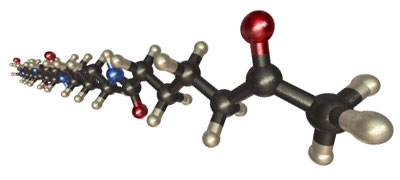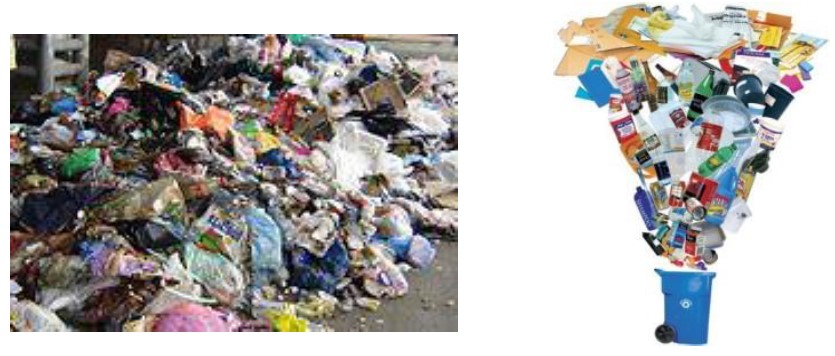Guest Post by Dr. Robert (Bob) Humphreys
In previous posts, we have discussed some of the trends in packaging that complicate the lives of the waste plastic recycling industry. Only 9.4% of the plastic in municipal solid waste (MSW) was recycled in 2014, based on data from the EPA (ref. 1), leaving about 30 million tons of waste plastic in MSW that is either landfilled or incinerated. Growth in the amount of plastic recycled is hampered by many factors, such as markets for plastics with recycle #3-7, increasing complexity and variety of plastics used in packaging (see ref. 2 for some recent examples), need for more efficient and effective automated separation technologies, and low quality (= cleanliness, e.g. residual contents) of the much of the waste plastic in MSW.
Waste plastics from consumer packaging also include a variety of additives to enhance or modify performance and appearance. Examples include pigments, labels, printing inks, plasticizers, fillers, adhesives, and antioxidants. Such additives are different for different plastics and even minor amounts and limit recycling potential. In some cases, very small amounts of the wrong impurity can ruin a batch of recycled plastic (e.g. as little as 0.01%, or one part in 10,000 of PVC in PET can make the unusable). Recycled plastics markets have great difficulty dealing with these materials.
While all of the issues above complicate the process of sorting and recycling waste plastic using the current recycling infrastructure, many similar issues have been faced by technologies for thermal conversion of biomass to fuels and chemicals (e.g. significant amounts of impurities, many different raw material types and compositions, variability even within a single raw material stream, mechanical conversion of raw materials into a practical form for transportation and processing, moisture removal to reduce energy use….see part 3 of “Introduction to Biopolymers and Bioplastics”, eBook available on this site for an extensive discussion). Similar thermal conversion technologies may offer the potential to “recycle” plastics to produce valuable fuels and chemicals while circumventing many of the issues with waste plastic recycling outlined above. Indeed, this potential has been recognized, with researchers and companies actively working to scale up and commercialize thermal technologies. The remainder of this post and the next post will focus on several thermal technologies that are under investigation.
Plastics Compared to Biomass and Hydrocarbons
Compared to hydrocarbon fuels such as gasoline and diesel, biomass has a much lower content of hydrogen attached directly to carbon, a fact that makes hydrocarbons a much better source of high energy density fuels such as gasoline (see “Introduction to Biopolymers and Bioplastics”, page 38-43). On the other hand, most high-volume commodity plastics found in MSW resemble hydrocarbons in hydrogen content. Examples of typical structures of a hydrocarbon found in diesel fuel, cellulose, the major component of biomass, and polyethylene and shown in Figure 1. It is easy to see that polyethylene resembles hexadecane, a typical component of diesel fuel, while cellulose contains more oxygen and fewer hydrogen atoms attached directly to carbon atoms. The largest component of plastic waste is composed of polyolefin (hydrocarbon) plastics such as PE and PP, although PET (with a lower ration of hydrogen to carbon) is also a significant component of plastic waste. Overall, this should make plastic waste superior to biomass as a source of fuel and chemicals.
Gasification of Waste Plastics
Plastic is introduced to a gasification reactor as fine, dry particles to ensure very rapid heating, which entails chopping the plastics into fine particles. The gasification process occurs by passing the plastic particles through a reactor at elevated temperature in the presence of a controlled amount of air or oxygen. Reactor temperature can range from 5500C to as high as 10000C. Residence time (time at the elevated temperature) is short. The key products of the pyrolysis are CO and H2, or Syngas, which is purified to remove other products (carbon dioxide, water) as well as gaseous impurities from a range of impurities in the waste plastic (e.g. HCl, or hydrochloric acid, from PVC and PVDC plastics, nitrogen oxides and nitrogen gas from nylons and polyurethanes, gases from low-level chemicals such as pesticides, flame retardants, fertilizers). As with biomass pyrolysis, one can expect significant amounts of other materials that will not gasify to be present in the waste plastic, depending on the source and MSW sorting process. These can include pigments, aluminum foil and other metals, and mineral fillers. The amount of these materials might be greater if the waste plastic is combined with other municipal waste (i.e. unseparated).
The gas produced from this pyrolysis process can be used in several ways. Most straightforward is to use it as a fuel to generate electric power and heat in a CHP (combined heat and power) facility. CHP is the most straightforward use of syngas because it eliminates the need for compressing, storing, and transporting the syngas, which is a hazardous material because of both the hydrogen gas (highly flammable) and the carbon monoxide (flammable and toxic). Of course, using syngas as a fuel effectively results in the conversion of all of the waste plastic into carbon dioxide, which, to repeat from Post 10, seems like waste of a valuable resource.
A more interesting alternative for syngas is to be used as a raw material for manufacturing fuels, basic, commodity, and specialty chemicals. Figure 2 below shows, syngas can be converted directly to methanol, which in turn is a raw material that can be applied to production of a huge range of fuels and chemicals, including important polymers such as polyethylene, polypropylene, and polyvinyl acetate. Utilization of syngas to support fuels and chemicals production will require compression and storage; this would necessitate major capital investment in compression.
Figure 2. Products from Syngas
For readers interested in greater technical detail about gasification of MSW to syngas, an excellent overview is presented in reference 3, including some discussion of reactor design and operation, discussion of potential economics, and a list of companies in the USA that are operating development or commercial scale facilities including some discussion of feedstocks. Most of the focus to date seems to be on mixed waste and MSW gasification rather than isolated waste plastic but the potential for waste plastic as a superior feedstock seems obvious.
We conclude this post by mentioning the potential to combine gasification biomass with waste plastic or unsorted MSW. Waste plastic would provide a source of additional hydrogen for biomass gasification and, as we will see in the next post, this might make waste plastic even more interesting for thermal conversions involving fast pyrolysis.
References and Links
- Advancing Sustainable Materials Management: 2014 Fact Sheet
- See, for example, Plastics Technology blog post, 5/28/2015, at https://www.ptonline.com/blog/post/colored-pet-pretty-to-look-at-headache-for-recyclers and EPPM (European Plastic Producers Magazine) at https://www.eppm.com/industry-news/is-the-european-pet-recycling-industry-at-risk/.
- Gasification of Non-recycled plastic from Municipal Solid Waste in the United States




Leave a Reply